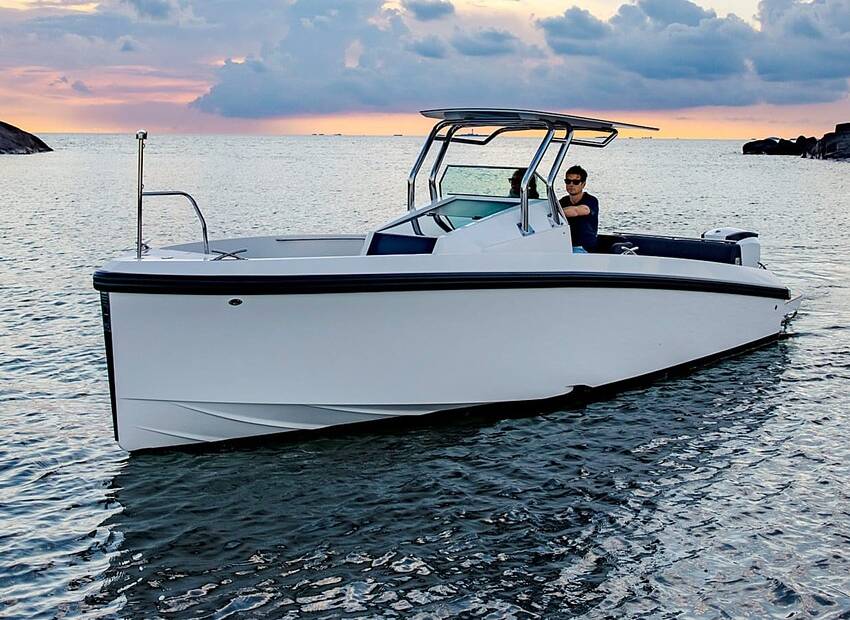Imagine that you are entering a crowded marina...
when all of a sudden your auxiliary engine dies!
Are you and your sailing crew ready to take control...
and dock your small sailboat--under sail alone?
Put these five "set sail ready" tips into play today...
~~~~~~~~~~~~~~~~~~~~~~~~~~~~~~~~~~~~
Imagine that you are entering a crowded marina on a busy Saturday afternoon. Big million dollar yachts line the slips and piers to port and starboard. You just had your reliable marine diesel tested and given a clean bill of health by the best diesel mechanic this side of the Mississippi. When all of a sudden--
Pop!--Bang!--Boom! Your engine vibrates and dies with a kick and a shudder. You push the starter again and again in desperation. Now, wind and current take control, as your small sailboat drifts closer and closer to the costly cruisers just ahead of your bow! Now what, skipper?
Dock under sail you say? Indeed, just like hundreds have done in the past. Practice these sailing skills to learn the secrets from sailing centuries past and gain the confidence that few modern sailors possess today!
Watch sailboats go in and out of a marina and you might tend to wonder what you are seeing. After all, it would make sense that sailors know how to sail well enough to slide alongside a pier, piling, wharf, seawall, or even into a slip. And do so under sail alone--when their engine dies.
Notice I say "when" -- not "if". That mechanical beast called an "auxiliary" requires hundreds of tiny, delicate parts to work just right to dock a boat. And here are just a few of the functions we expect it to perform "on demand" time and again and again...
● Shift into forward propulsion.
● Shift into neutral gear.
● Shift into reverse propulsion.
● Turn the propeller shaft.
● Increase throttle speed.
● Decrease throttle speed.
Stay "set sail" ready so that you can take over in a matter of seconds, just in case one of these functions fails. This includes when you exit or enter marinas, channels, inlets, canals, or any restricted area where loss of engine could cause grounding or damage to your boat or another boat. Practice these five sailing tips with your sailing crew or partner.
1. Enter With Sails Ready to Hoist.
Stow sun covers or canopies to clear the cockpit before you enter or exit a marina. This will allow you to work your sails with better all around visibility. Stow sail covers below until you are tied up safe and sound.
Keep halyards ready and attached to the mainsail and a small working jib. If you have a cutter rig, hank on a small flat-cut staysail (easier to handle; clears the forward part of the bow; flatter sails will get you to windward in a pinch).
A final thought--keep headsail sheets free to run. If you need to enter under headsail alone with the wind aft, you must be able to luff the headsail all the way. This applies to furling sails too. Keep headsail sheets ready to run free to maintain that "set sail" ready status that puts you in control!
2. Prepare Your Bow and Stern Insurance Policy.
Get your main bow anchor and a smaller, easy to handle, stern anchor rigged and ready to use in a matter of seconds. Check that all anchor rode will run out free of knots. Train your sailing crew or partner how to deploy them for peace-of-mind in any tight spot like a marina, narrow inlet, or shoal infested waterway.
3. Regulate Sail Control "Throttles and Shifter".
Learn the sail controls and points of sail that give you virtual shifters and throttle. Use the close reach for the ideal docking point of sail if possible. Pull in on the mainsheet to speed up; ease the mainsheet to slow down; slack the mainsheet all the way to luff the mainsail and drift to a stop; push the boom out (back-winding) to stop fast.
4. Look for Emergency "Pit-Stops" Along the Way.
Look for empty slips, dock space, or even pilings ahead of your boat when you enter or exit a marina. These will empower you to have a ready-made pit-stop to slide alongside or into in case your iron Genny fails to deliver.
5. Work Wind and Current to Your Advantage.
Which side of the narrow channel of waterway do you favor. First, in your mind, stop the engine. How will your small cruising sailboat drift? No matter whether sloop, cutter, ketch, yawl, or cat--you can bet she will drift downwind or down current. So you should always favor the upwind or up current side if possible.
That may not work if you have the wind to port and heavy outbound boat traffic. The Navigation Rules require you to stay to starboard. But when you get a break in boat traffic, slide over a bit to windward to stay "Sail Ready" for action if necessary.
~~~~~~~~~~~~~~~~~~~~
Learn to sail like a pro with these five easy sailing tips that will put you in control. Prepare ahead of time to become the true master and commander of your small sailboat, wherever in the world you choose to sail or cruise!
Get instant access to 400+ sailing articles, videos, live discussion forums, and free ebooks! Click here to find out more!
Captain John






















